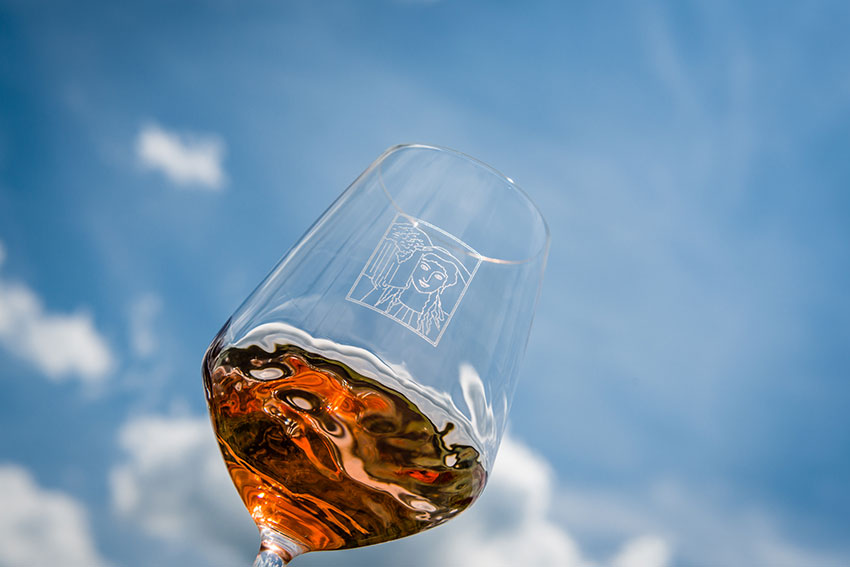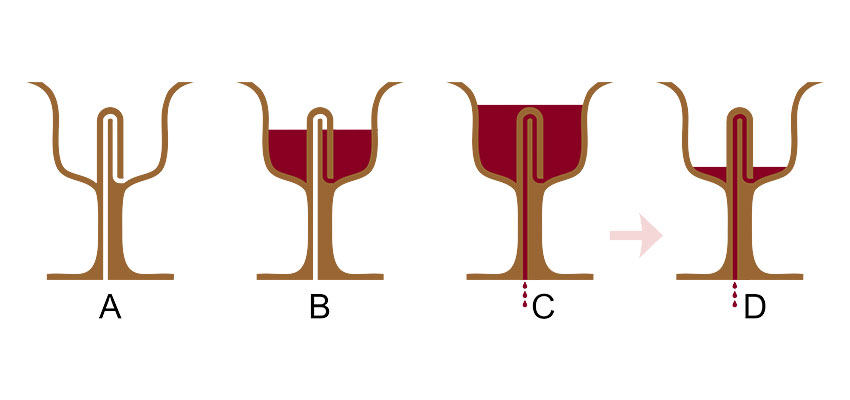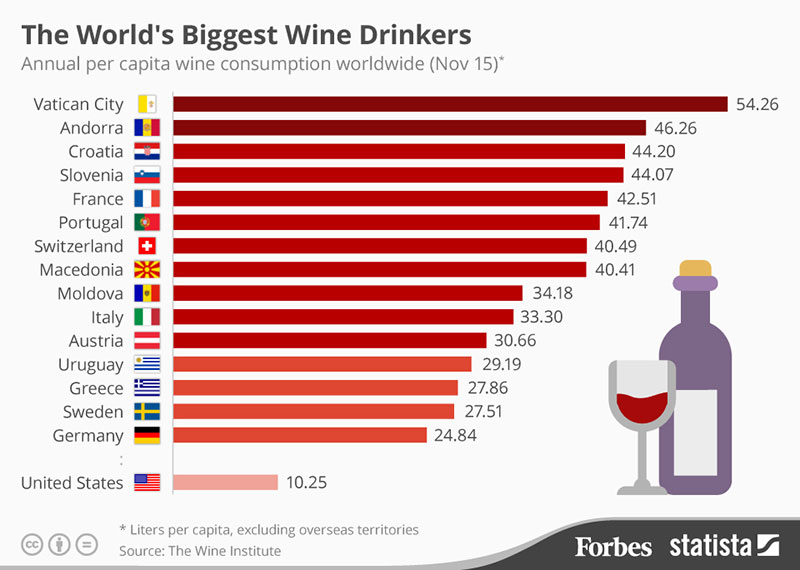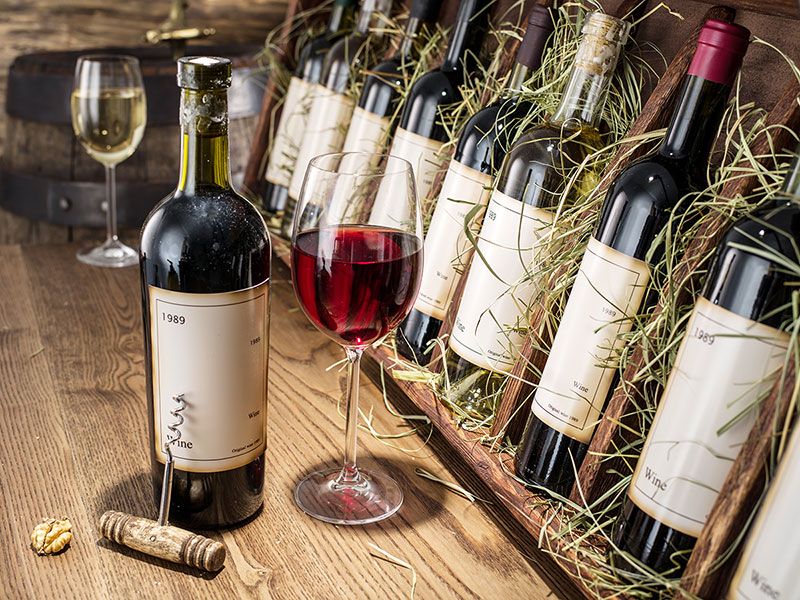
Today we want to share with you a few interesting facts about wine: let’s see how many you already knew!
- Did you know that Ancient Greeks designed a special wine cup that self-empties whenever the liquid inside exceeds a certain level? This clever invention is known as the “Pythagorean cup“, and it works via a hidden system of pipes exploiting the principle of communicating vessels – effectively draining the cup of all its content whenever too much wine is poured into it.

Source: Wikipedia.
- You may already know that China and United States are the two world giants when it comes to wine consumption by sheer volume (we can proudly say that Italy and France are not so far behind in comparison), but what about wine consumption values per capita? The country which has been on top of the ranking for many years is none other than… the Vatican City! According to statistics, dwellers of this small state drink an average of 56 wine liters per capita every year. It is a surprising result when compared to the average of France and Italy (hovering between 45 and 35 wine liters per capita every year), but we must not forget that the small population size of the Vatican may be the reason for this statistical anomaly.

Source: Forbes.
- Did you know that vineyard owners in the US were able to make profit out of grapes even during Prohibition years? Incredible as it seems, some of them built up their fortune by selling… grape juice! Grapes were harvested and processed to obtain concentrated juice, which was then sold on the market in the shape of “bricks”. Consumers would then need to dissolve each brick in a gallon of water and consume the juice.
Here is where things get interesting: since US Prohibition Law compelled producers to warn customers against using grapes to obtain alcohol, juice bricks cartons came with a clear warning that could go more or less like this:
“Be careful! After you mix the concentrate with water, please do not store the mix away in a cool place for 20 days– as it will turn into wine”.
Needless to say juice bricks sales skyrocketed during those years!
- In 2016, a small club of wine lovers in New Zealand organized a wine tasting event to celebrate the opening of one of the oldest bottles of wine in the country. A 1903 vintage red had in fact made its way until these days by spending most of the 20th century in an old cellar long after the original vineyard had stopped production. The centenary mix of pinot noir and syrah still retained enough character to earn positive judgments from the panel of enthusiastic wine critics invited to the event. Remember this story the next time you discuss with your friends about the importance of a good cork and correct wine storage!

- If you happen to be travelling around Germany and you are passionate about wine, why not make a detour to take a look at the oldest existing bottle of red wine in the world? We are talking about the famous Römerwein, an artifact found within a Sarcofagus of Roman Era of the 4th century AD. It will take more than a group of wine enthusiasts to break the seal of the oldest known unopened wine bottle in the world, since scientists are still not sure of how the wine will react with air after all these centuries. Meanwhile, wine lovers can admire the bottle at the permanent exhibition held within the Speyer Museum.
- Good looking bottles make wine taste better. This is the unexpected result of many experiments led by universities, researchers and independent journalists inquiring on whether external factors other than wine itself can impact a wine tasting experience. What they discovered is that if the same wine is poured from a nice-looking bottle, even wine experts tend to issue significantly higher marks – as opposed to those received by the same wine if it is poured from what looks like a cheap supermarket bottle. This is a great reminder that no judgment is immune to external factors and expectations.
- Have you ever wondered where the tradition of “Toasting” wine comes from? The following line from Shakespeare’s The Merry Wives of Windsor may give you a hint: Falstaff demands – “Go fetch me a quart of sack; put a toast in’t.”This literally means “put a piece of toasted bread in the drink”, and is tangible evidence of what was a widespread practice ever since the middle ages. People put a piece of toasted bread into wine before drinking it as an attempt to compensate for its acidity. In these centuries, it was still difficult to control fermentation when storing wine, so this was the most effective way to soak up some of the unwanted flavors and temper the bad taste of a drink. Guests would often be offered the soaked piece of bread as a gesture of respect and reverence.






Leave a Reply